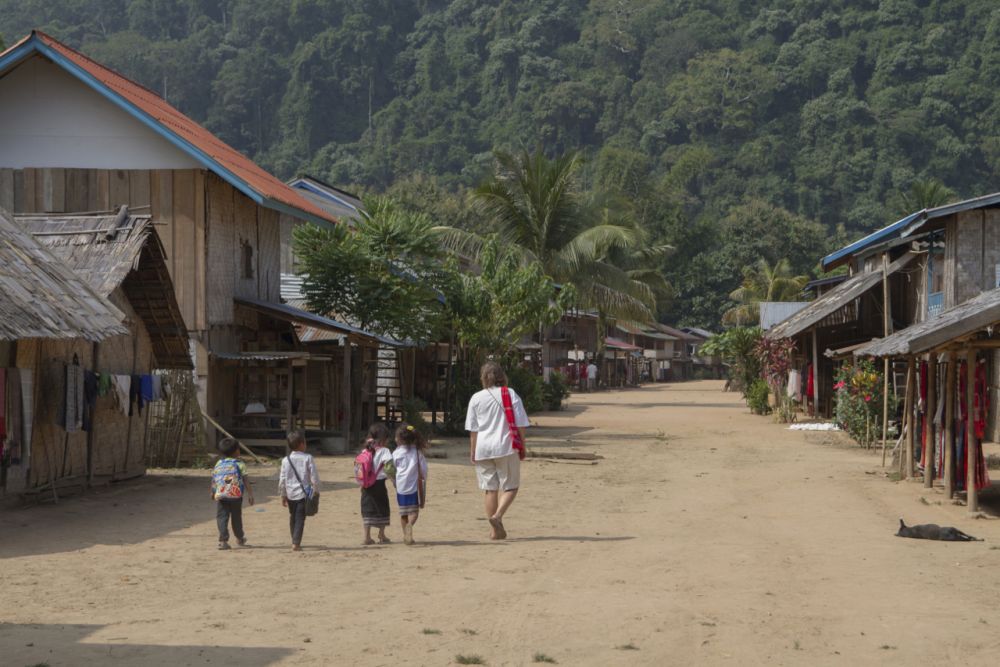

The history of tourism in Muang Ngoi Neua, a serene village in northern Laos, is relatively recent. With Laos opening its doors to international visitors in the 1990s, the picturesque region of Muang Ngoi Neua began to appear on the radar of adventurous travelers. Initially known for its untouched natural beauty and as a retreat from the busier tourist spots, Muang Ngoi Neua, and its surrounding villages like Ban Sop Jam and Ban Houay Bo, have gradually built a reputation as a place where visitors can experience rural Laotian life in an intimate and sustainable manner.
Ban Sop Jam is a captivating little village known for its traditional Lao textiles. Mostly populated by the Tai Lue ethnic group, the village has maintained its ancestral methods of weaving. The intricate patterns and vibrant colors seen in their textiles are not only a significant source of income for the locals but also an essential aspect of their cultural identity. Tourists visiting Ban Sop Jam can witness the weaving process first-hand and even purchase these unique hand-made items directly from the artisans, providing a source of sustainable tourism in the community.
In contrast, Ban Houay Bo is a small Khamu village nestled amidst the tranquility of the Laotian wilderness. Its residents live a largely traditional lifestyle, with a strong connection to the land and river. Here, visitors have the opportunity to engage with the local community and learn about their way of life, which is characterized by farming and fishing. Homestays are available for tourists seeking a deeper cultural immersion, which fosters a meaningful exchange between visitors and villagers and also serves as a modest but essential income source for the hosts.
With the world becoming more conscious about the impact of travel, sustainable and ecotourism practices are on the rise, especially in regions like Muang Ngoi Neua. Visitors are increasingly seeking authentic experiences away from the traditional tourist circuit. Activities such as trekking, community-based tourism, and cultural exchange programs are becoming more popular. This aligns with a more significant global shift towards responsible travel, where tourists strive to minimize their environmental footprint and have a positive impact on local economies.
Despite the potential benefits, tourism in Muang Ngoi Neua faces challenges. The balance between preserving cultural heritage and accommodating tourist influx, infrastructure development without damaging the environment, and ensuring that tourism benefits are distributed equally among the community are ongoing issues. Moving forward, the focus is likely to remain on developing sustainable tourism that respects the local culture, traditions, and natural landscapes while providing economic opportunities for villagers in Ban Sop Jam, Ban Houay Bo, and beyond.